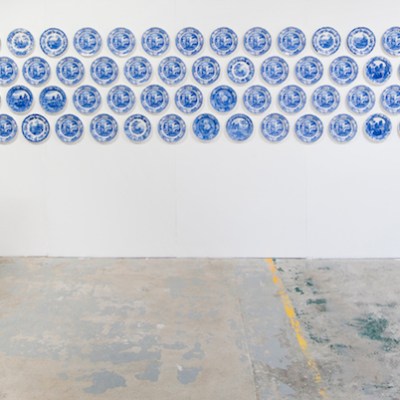In Robert Burns’ 1786 poem addressed ‘To a Louse’, he wishes ‘O wad some Pow’r the giftie gie us / To see oursels as ithers see us!’ The disparity between self and public perception is commonplace and most of us eventually come to terms with it. Among artists of all disciplines, however, acceptance of this truth appears less easily gained. In January 2014, for example, the New Yorker ran a profile of novelist Jennifer Weiner who, despite selling millions of copies of her books, has never been reviewed in the New York Times. Understandably, this oversight rankled with Ms Weiner who was inclined to blame sexism in the highbrow literary press. But perhaps the real reason lies with her commercial success: critics have long had trouble accepting popular acclaim.
This may explain why 19th-century French painter Henri Fantin-Latour, for whose still lifes there was once an almost insatiable demand, has rarely commanded much critical attention. Currently the subject of an exhibition at Paris’s Musee du Luxembourg (‘Fantin-Latour: A fleur de peau’, until 12 February 2017), the artist and his posthumous reputation were explored by Denys Sutton in the January 1984 issue of Apollo. Inevitably Sutton opened with the observation that of his contemporaries, Fantin-Latour ‘is probably the one whose work is least known in its entirety. Nowadays his reputation rests mainly on the bouquets of flowers that helped to brighten Victorian interiors.’
The painter initially produced these pieces to generate funds thereby allowing him to devote attention to other and, as he deemed it, more serious work. But the still lifes came to the attention of Edwin and Elizabeth Edwards, wealthy English collectors who started to buy them in large quantities, and encouraged their friends to do likewise (Whistler acquired several). As often happens, the lure of a steady income grew irresistible and between 1864 and 1896 Fantin-Latour painted over 800 floral pictures; Sutton notes that in 1872 alone he turned out 45 of them. And despite being ‘as fed up with painting flowers as Sargent was with doing faces, he continued to produce them with customary skill’. Quantity did not lead to diminution of quality.
On the other hand, there were consequences. In the first place, Fantin-Latour had less time than he might have wished for any other work and secondly his reputation both then and since has rested on what always threatened to become the visual equivalent of potboilers. It is, for example, easy to confuse him with another once-famous flower painter of the same era, the mondaine Madeleine Lemaire, of whom Dumas fils said only God had created more roses. Today Mme Lemaire is primarily recalled for her friendship with Marcel Proust: she illustrated his first book Les Plaisirs et les Jours (1896).
Melancholic in youth and inclined to misanthropy in later life, Fantin-Latour was conscious that the most commercial strand of his output overshadowed everything else. He painted many fine portraits, famously one of Manet in 1867 (now in the Art Institute of Chicago) and a number of group portrayals of men he knew and admired, including Monet, Renoir, and Whistler, and writers such as Baudelaire, Verlaine, Rimbaud, and Zola.
These now serve as an invaluable record of cultural life in Paris in the second half of the 19th century, but they were not the pictures closest to his heart. Passionately interested in music, he was an ardent Wagnerian: a visit to Bayreuth in 1876 to hear one of the first performances of the complete Ring cycle he deemed among the most important events of his life. Twelve years earlier he had painted a scene from Tannhauser and thereafter continued to produce oils and etchings reflecting his musical interests. Music, for example, painted in 1880, shows a half-nude female inscribing on a wall the names of Fantin-Latour’s favourite composers: Schumann, Berlioz, Wagner, and Brahms.
Now the least known part of his oeuvre, these pictures were during Fantin-Latour’s lifetime also the least critically appreciated, a charge being that they owed too great a compositional debt to the Old Masters he had studied in the Louvre as a young man. The assessment is fair, although the allegorical nature of some such paintings made them precursors of French Symbolism. Yet the fact remains that his finest work was that to which he attached least importance: the floral still lifes.
At the end of his text, Sutton quotes Paul Claudel’s remark that the still lifes of Fantin-Latour possess ‘a hushed silence that bids us still the inner voice’. The pity is that he was unable to see himself as others saw him.
From the October 2016 issue of Apollo.


